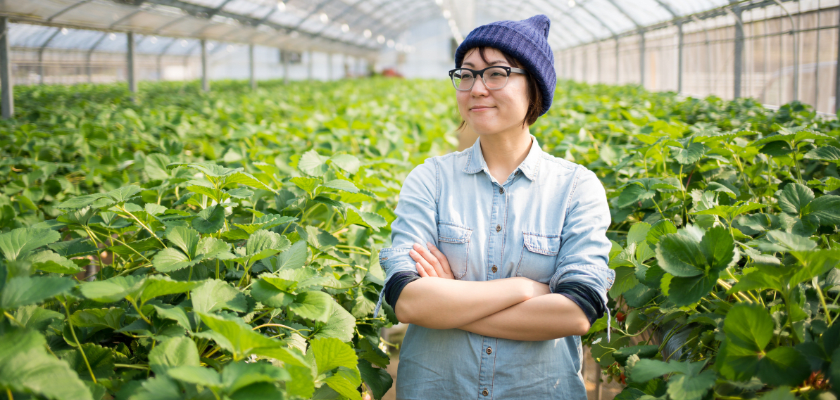Keep your greenhouse booming with a healthy workforce: Know the top hazards putting worker safety at risk

The Ontario greenhouse industry is booming. With increased production of fruits, vegetables, flowers, and plants, greenhouse growers have been expanding by a steady five percent each year. “Without a doubt, the greenhouse sector has seen significant growth in recent years,” says Kristin Hoffman, Health and Safety Consultant with Workplace Safety & Prevention Services (WSPS). “It also has one of the highest rates of lost-time injuries in the agriculture sector.”
When looking at Ontario’s agriculture sector, Workplace Safety and Insurance Board (WSIB) statistics show* that those who work in crop production, which includes greenhouse workers, experienced the most injuries over the past four years. The good news is that, although these workers have been experiencing a high number of injuries, that number has been declining.
Between 2020 and 2023, exposure to noxious substances was the top cause of injury. “We know most of these were related to COVID infections,” says Kristin. “So, when we remove those instances, that enormous number goes down dramatically. And then we see that falls, overexertion, and getting struck by objects or equipment have been the top causes of injury in greenhouses.”
Tackle these top hazards
To prevent workers from getting hurt, first recognize and assess the hazards in your workplace. Then implement and evaluate how you are controlling workers’ exposure to the hazards. Break down each task done in your workplace to determine which hazards are present and then implement effective controls through:
- elimination (removing the hazard)
- engineering (modify processes and equipment to reduce hazards)
- procedures, and
- training your staff.
Provide the training in the language workers will understand. “Many greenhouse workers are temporary foreign agriculture workers. You may need to translate training material and other information,” says Kristin. She offers some tips on how to control the top hazards that are putting greenhouse workers at risk.
1. Slips, trips, and falls—Water, soil, hoses, and cords are common culprits in greenhouses that lead to slips and trips. Good housekeeping practices can prevent injuries from happening. When something spills, clean it up right away.
“Different types of flooring is also a common cause of trips and falls in greenhouses,” says Kristin. Moving from a concrete floor to a dirt floor or a fabric-covered floor can be tricky, especially if the dirt is uneven or the fabric has been torn. “Pay particular attention to the transitions from one flooring to another to make sure they are even,” suggests Kristin.
2. Overexertion—When workers are pushing, pulling, or lifting heavy carts or trays, they can experience overexertion, which is a musculoskeletal disorder (or MSD). MSDs describe a number of different aches and pains affecting the musculoskeletal system (your muscles, tendons, and nerves). Common MSDs include back pain, carpal tunnel syndrome, and tendonitis. “Job rotation can help minimize the risk of overexertion,” says Kristin. “Changing from one task to another, gives your body a bit of a rest while still being productive,” she says. “It’s also important to train workers on proper lifting techniques.”
3. Struck by objects or equipment—Greenhouses have a lot of moving parts and equipment, from forklifts and tractors to carts and conveyors. While these are very helpful tools, they also pose a significant risk to workers when not managed properly. “Training and design are key to minimizing risk from these types of hazards,” says Kristin. Equipment operators must complete proper training and evaluation of their performance before driving a forklift, tractor, or any other vehicle. Those who work near this type of equipment also need training so that they understand blind spots, signals, and the importance of eye contact. Designate pedestrian pathways to keep workers and mobile equipment separate.
When it comes to design, organize work areas so employees are not placing or grabbing things from above their head (e.g., tall shelves or racks). “This will reduce the risk of something falling on them,” explains Kristin.
Prepare for the future
As we look into the future of greenhouses in Ontario, we have to consider rising temperatures and heat stress. “As the climate changes, it is going to impact all parts of our world, including workplaces that are already hot, such as greenhouses,” says Kristin. “The way that greenhouse operators have been managing heat stress may need to be reviewed and updated to account for even warmer workplaces.”
Kristin is optimistic that new technologies, such as artificial intelligence, will be able to help us find better methods for controlling hazards. “For example, in the case of heat, automated equipment that eliminates the physical exertion of manual material handling may help workers keep their body temperatures lower,” she says. In the meantime, Kristin recommends scheduling cooling breaks, rest periods, and ensuring workers are adequately hydrated to manage heat.
All signs point to continued growth for Ontario’s greenhouse industry; however, growth does not happen without a skilled, reliable workforce. Invest in your workers, help them stay safe and healthy, and position your operation to leverage future innovations.
*According to the WSIB EIW Database, data pulled as of July 2024.
How WSPS can help
Resources
- Check out safety resources for greenhouse growers to learn best practices and access specially curated health and safety resources.
The information in this article is accurate as of its publication date.




